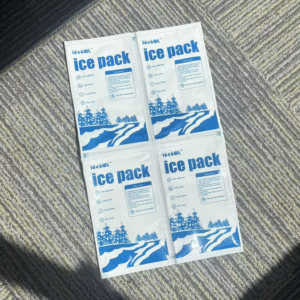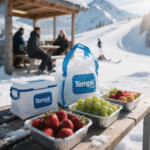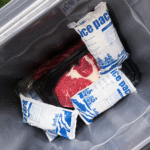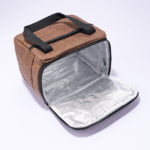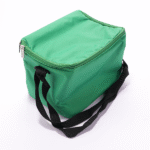Mis à jour: Août 15, 2025. Si vous recherchez packs de glace carbonique, vous verrez principalement des packs de gel réutilisables, pas de glace sèche. Ce guide montre ce que Target vend réellement, où acheter de la vraie glace carbonique rapidement, comment expédier selon les spécifications 2025, et quand les panneaux PCM réutilisables battent les deux. Il allie clarté et étapes testées sur le terrain afin que vous puissiez choisir une seule fois et expédier correctement.. Cet article unifié fusionne et améliore vos trois brouillons.
-
Qu’est-ce que les « blocs de glace carbonique Target » vous apportent réellement ?? Longue queue: "Est-ce que Target vend de la neige carbonique?»
-
Comment devriez-vous expédier 2025 si le gel ne suffit pas? Longue queue: " ICI PI 954 étiquettes de glace carbonique »
-
De quelle quantité de neige carbonique avez-vous besoin, de façon réaliste? Longue queue: "glace carbonique par 24 estimateur d'heures"
-
Où pouvez-vous acheter de la vraie neige carbonique aujourd'hui près de chez vous? Longue queue: «Localisateur de glace carbonique d'épicerie»
-
Quand les panneaux PCM à −20°C battent-ils la neige carbonique? Longue queue: « Expédition de glace carbonique synthétique PCM »
Que signifie réellement « blocs de glace carbonique Target » dans 2025?
Réponse courte: Target répertorie les compresses froides réutilisables/instantanées sous « packs de glace carbonique Target »; il ne vend pas de glace sèche au CO₂. Les packs de gel sont parfaits pour les déjeuners, excursion d'une journée, et courses 1–10°C. Pour les expéditions surgelées, utilisez de la vraie neige carbonique ou des dalles PCM à −20°C. Deux points de données rapides: la neige carbonique se situe à −78,5°C; la plupart des packs de gel grand public oscillent entre 0 et 5 °C lorsqu'ils sont congelés.
Pourquoi ça compte pour toi: Les pages de produits étiquetées « bloc de glace carbonique » signifient souvent gel recongelable, pas littéralement de la neige carbonique. C'est bien pour les pique-niques, risqué pour les fruits de mer ou les desserts surgelés. Pour les voies gelées pendant la nuit, prévoyez de la vraie neige carbonique ou du PCM prêt à être réutilisé. Normes mentionnées dont vous entendrez parler: Voici pi954 (air), Publication USPS52 9A (mail), et outils de travail pour les transporteurs (Par exemple, FedEx).
Glace sèche vs. gel VS. PCM: qui correspond à votre travail?
Règle: Gel pour réfrigéré (1–10 ° C), glace carbonique pour surgelés, PCM -20 ° C quand vous voulez une congélation sans matières dangereuses. Utilisez des blocs de glace carbonique Produits en gel Target pour les glacières et les premiers secours; utilisez de la neige carbonique ou du PCM lorsque « dégel zéro » est votre promesse.
| Option (2025) | Température typique | Réutilisation | Mieux pour | Ce que cela signifie pour vous |
|---|---|---|---|---|
| Packs de gel/glace (Cible) | 0–5 ° C | Réutilisable | Déjeuners, pique-nique, 2–8 ° C | Simple, bon marché, pas pour l'expédition congelée. |
| Glace sèche (CO₂ solide) | ≤ −78,5°C | À usage unique | Marchandises surgelées | Nécessite une ventilation, Et1845, Classe 9 étiqueter pour l'air. |
| PCM « glace carbonique synthétique » | −20 ° C (panneaux) | Réutilisable | Congelé sans matières dangereuses | Précongeler électriquement; écurie, prises répétables. |
Conseils pratiques pour les acheteurs de « packs de glace carbonique Target »
-
Course réfrigérée: Associez les packs de gel Target à une glacière souple et étanche; pré-refroidir les articles en premier.
-
Congelé, du jour au lendemain: Utilisez un expéditeur doublé de mousse + glace sèche sur le dessus; étiqueter par 2025 règles aériennes.
-
Congelé sans matières dangereuses: Passer aux dalles PCM à −20°C; valider une boîte avec une sonde.
Cas réel: Un échantillonneur de fruits de mer a échoué avec des compresses froides instantanées (arrivées ~50°F). Passage aux dalles PCM −20°C maintenues −2°F à la livraison, sans manipulation de glace carbonique.
Comment expédier 2025 quand les « blocs de glace carbonique Target » ne suffisent pas?
Liste de contrôle de base (air, Voici pi954): Utiliser un emballage ventilé, marque « Glace carbonique/Dioxyde de carbone, solide," ajouter UN1845 et le kg net, et appliquez une classe de 100 mm 9 étiquette. Les transporteurs vérifient de plus en plus la taille des étiquettes et les marquages sur la même face lors de l'acceptation. USPS autorise l'air domestique avec une limite de 5 lb par pièce sous 9A; pas d'envois internationaux. FedEx conseille toujours d'emballer pendant environ 30 heures, même si vous réservez pour la nuit.
Étapes en anglais simple que vous pouvez imprimer:
-
Choisissez un expéditeur isolé (doublure en mousse étanche ou refroidisseur dur) et ne pas sceller hermétiquement.
-
Produits humides en double sachet; remplir les vides pour que l'air froid puisse circuler mais pas s'accumuler.
-
Charger la charge utile, puis placez glace sèche sur le dessus donc l'air froid coule. Laisser un chemin de ventilation.
-
Marque Et1845 + filet kg, ajouter une classe 9; réserver le service et déclarer correctement les kg nets.
-
Dimensionner le réfrigérant pendant environ 30 heures pour couvrir les retards de tri et le séjour de première tentative.
Une sécurité incontournable
-
Portez des gants isolés et une protection des yeux; Le CO₂ peut provoquer des brûlures par le froid et déplacer l'oxygène.
-
Aérer les véhicules et les pièces; ne jamais stocker dans des espaces fermés.
-
Conservez la glace sèche loin des animaux vivants et jamais dans des bocaux ou des bouteilles scellés..
De quelle quantité de glace carbonique avez-vous besoin au-delà de la « cible des packs de glace carbonique »?
Réponse rapide: Budget 5–10 lb par 24h selon la taille de la boîte, isolation, chaleur ambiante, et promis l'arrivée. Les petits cartons de nuit commencent souvent entre 4 et 6 lb; expéditeurs de mousse moyenne de 8 à 10 lb. Validez toujours avec une sonde sur votre voie.
Signification de l’estimateur: Petit EPS ≤0,5cuft → ~6–7lb; 0.5–1,0 pied → ~9 à 11 lb; 1.0–1,5 pied → ~13-15 lb, +2 lb pour la chaleur estivale ou les longs derniers kilomètres.
Où acheter de la vraie glace carbonique rapidement si « packs de glace carbonique Target » affiche uniquement du gel?
Utilisez les localisateurs de magasins de marque et appelez votre épicier le plus proche (Safense, Kröger, Publique, Walmart). Attendre $1–3 $ le livre avec blocs ou pellets au service client. Apportez des gants et une glacière ventilée pour le trajet. Pour les acheteurs cibles, le combo intelligent est Refroidisseur cible + glace sèche d'épicerie + Étiquettes correctes.
2025 les tendances qui façonnent les décisions relatives aux « blocs de glace sèche »
Quoi de neuf: Les transporteurs ont renforcé les contrôles d'acceptation Pi954 étiquettes et précision du kg net. L'USPS a maintenu le ≤5lb limite aérienne intérieure. Intérêt pour −20 ° C PCM a grandi à mesure que les équipes recherchaient le réutilisable, options économes en énergie et SOP plus simples. Les détaillants comme Target continuent de développer leurs packs de gel et leurs glacières, tandis que la glace sèche au CO₂ reste un article de comptoir spécialisé.
Dernier progrès en un coup d'œil
-
Précision des étiquettes: Attendez-vous à une classe de 100 mm 9 vérifications des étiquettes et des formulations identiques aux comptoirs.
-
30norme d'emballage en heures: Les réservations de nuit ont encore besoin d'un tampon pour le tri et le séjour sur le porche.
-
Refroidissement réutilisable: Les dalles PCM à −20°C réduisent la manipulation des matières dangereuses et peuvent réduire l'énergie totale au fil du temps.
Perspicacité du marché: Les consommateurs acceptent le gel pour les excursions d'une journée mais s'attendent à ce qu'ils ne soient pas dégelés sur les aliments surgelés.. Cela garde de la vraie neige carbonique (ou PCM) centrale pour les denrées périssables expédiées—pas juste des packs de glace sèche Options de gel cible.
FAQ
Target vend-il réellement des blocs ou des pellets de glace carbonique au CO₂ ??
Non. "Packs de glace carbonique» renvoie du gel réutilisable ou des packs instantanés. Achetez de la vraie neige carbonique chez les épiciers ou chez les fournisseurs de gaz.
Les compresses froides instantanées sont-elles bonnes pour expédier de la nourriture?
Ils sont destinés à de courtes périodes de thérapie (≈20-30min), pas pour les performances d'expédition congelées.
Quelle température d'arrivée est sans danger pour les aliments?
Viser ≤40 ° F (4 ° C) pour réfrigéré; 0 ° F (−18 ° C) ou des cristaux de glace pour les surgelés. En cas de doute, ne pas consommer.
Puis-je envoyer de la neige carbonique via USPS?
Oui, au niveau national sous la publication52 9A avec emballage et étiquettes ventilés; pas d'envois internationaux.
Quand dois-je choisir un PCM à −20°C plutôt que de la glace carbonique?
Quand vous voulez réutilisable, Contrôle du gel sans matières dangereuses avec des prises prévisibles et des SOP faciles.
Autocontrôle en une minute: Les « blocs de glace carbonique Target » vous suffisent-ils ??
-
But: courses réfrigérées ou envois surgelés?
-
Gamme: 2–8 ° C, 0–5 ° C, ou ≤−20°C?
-
Temps: heures porte-à-porte jusqu'à la première tentative de livraison?
-
Transporteur: Bouchon USPS 5 lb ou coursier sous PI954?
-
Opérations: d'accord avec les étiquettes de matières dangereuses ou préférez le PCM réutilisable?
À propos du tempk
Nous concevons fondé sur des données probantes emballages sur gel, PCM, et glace sèche. Notre équipe allie savoir-faire réglementaire (Aides à l'emploi IATA/USPS/transporteur) avec des tests en chambre pour que votre boîte reste à portée - de 2–8 ° C des kits repas pour −20 ° C desserts glacés, sans trop dépenser en liquide de refroidissement. De nombreux clients ont coupé le réfrigérant 15–30% tout en améliorant les températures d'arrivée. Besoin d'une décision « gel vs glace carbonique vs PCM » en une seule page? Contactez Tempk pour une consultation rapide sur le dimensionnement et un modèle de SOP prêt à l'emploi.






